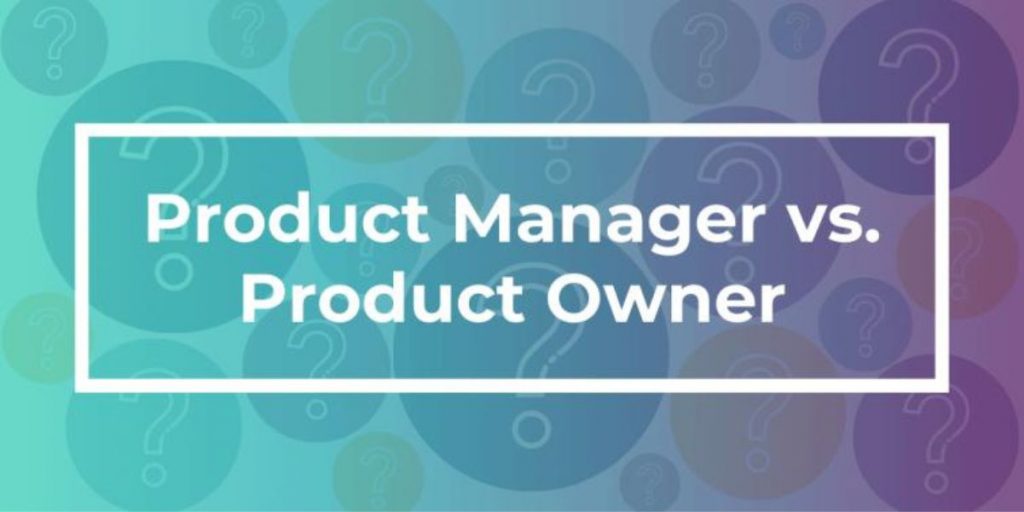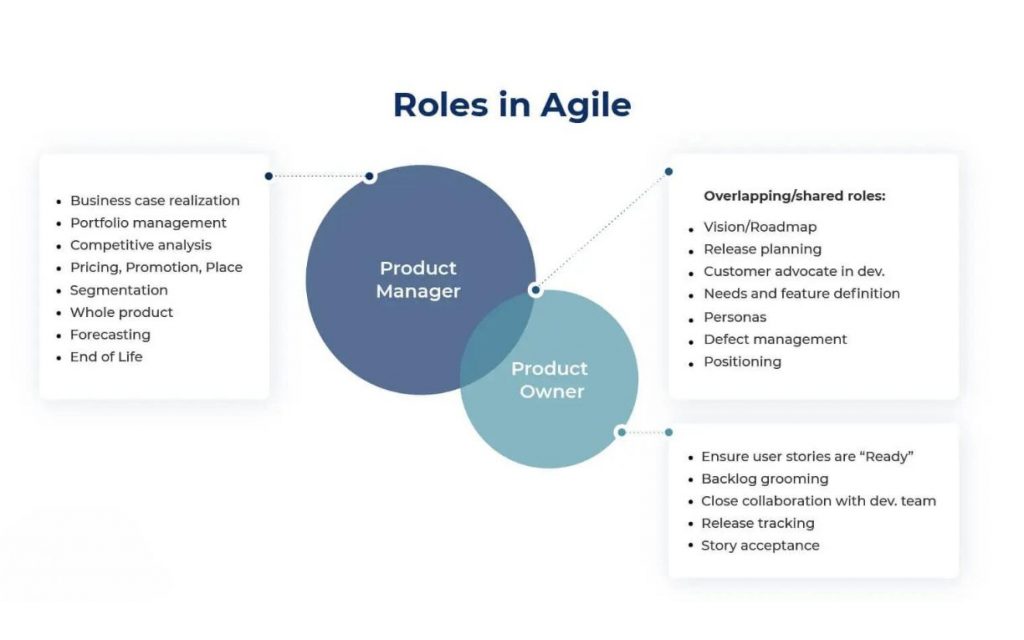
Last month, we presented the webinar, The Product Manager vs. Product Owner Role – Siblings, Rivals, or the Same Person? You can view the accompanying blog post as a primer to learn about how to optimize the relationship between these roles. We received so many great questions on the topic and have included answers to the top questions down below. Thank you all for engaging in our webinar! If you want to learn about how the product, program, and project manager positions are different, check out this blog that tackles the differences!
Q&A
Are Product Managers both Traditional and Agile? Secondly, is an Agile Product Manager a Product Owner?
Let’s start by remembering that Agile and Waterfall/Traditional are development methodologies – ways to build a product.
Product Managers exist to understand the market, identify customer needs, and determine a product strategy to meet those needs and achieve the company’s business goals (for instance, revenue and profit). So, there aren’t “Agile Product Managers” or “Traditional Product Managers,” just Product Managers who learn how to work with a development team and the methodology they use to build products.
Product Owners are a different role in the Agile methodology who are responsible for working with Product Managers to make sure that the development team is delivering the right business value with the products they are developing. Read this blog to learn more about the differences between product owners and managers.
Who is more strategic, the Product Owner or Product Manager? The general feeling is that Product Owner is tactical in nature and plays second-fiddle, while the Product Manager is closer to higher management.
There are a couple of ways to address this question. First, Product Managers and Product Owners both have strategic and tactical responsibilities. As the diagram shows, they must both understand the product vision, product strategy, and the goals of the product roadmap – a shared strategic responsibility. The Product Manager has other tactical responsibilities on the business side, such as tracking product financials and supporting Marketing with product messaging, while the Product Owner has tactical responsibilities on the development team side, such as making sure user stories and acceptance criteria are really “ready.”

Does the Product Manager have a wider set of responsibilities? Yes. Does that make the Product Owner less important? No. Each has a joint responsibility to build the best product possible to meet customer needs and achieve business goals, but they play different roles to achieve those goals.
Who do Product Owners typically report to?
There is no “right answer” to this question. Most often, we see Product Owners belong to the Development team or Engineering. But more and more, we see them belong to the product management team. Each approach has its pros and cons. Wherever the Product Owner role sits in the organization, it’s important to ensure two things:
- The Product Owner is always available to the Development team, to provide them the data, answers, and guidance they need to be successful.
- The Product Owner should stay in close alignment with their Product Manager. The Product Manager should be meeting with the Product Owner on a regular cadence, separately from sprint ceremonies, such as standups or sprint reviews, and should always be available to quickly answer Product Owner questions.
I work for a startup and have found myself stretched too thin serving effectively as Product Manager and Product Owner. I spoke to my executive management this week about adding another person to serve in one of those roles. I am fairly well versed in hardware and software as well as the bigger strategy. How should I decide which to hire: a Product Manager or Product Owner?
What are you more interested in: Solving business problems or solving technical problems? Do you want responsibility for figuring out the right product to build, or figuring out how to build the product the right way?
The answers to those two questions should help you choose which role you want to keep, and which you want to fill with a new hire.
What is a reasonable number of products a Product Manager or Product Owner should have under his or her purview?
Again, there is no “right answer” to this question. Our recommended best practice is that a Product Owner should work with no more than two scrum teams. However, this can vary depending on the scope of the product the scrum teams are working on. For a complex or critical component, working with one scrum team would probably be better. For a collection of a few smaller products or components, maybe three would work.
The same holds true for a Product Manager. For a product with a small customer base or a narrow set of benefits, the Product Manager might be able to handle two products. For a product with multiple benefits and more complexity, it may be better to be focus on just one product. The answer to the next question provides additional insight.
What are your thoughts on the Hybrid role for products where the internal users are the customer? Take CRM as an example.
The situation you’re asking about is a good example in which keeping the Product Manager or Product Owner roles together can work. “Internal products” don’t require as much effort to track success or gather voice of the customer (VOC) information. The hybrid Product Manager/Product Owner role is still very busy, but as long as the scope of the benefits of the product isn’t too broad, this can work.
I’m still not sure where the Business Analyst sits in this chart. What are the key responsibilities for the Business Analyst versus a Product Owner or Product Manager?
Over the years, the definition of a Business Analyst has become almost as confusing and variable as that of the Product Manager. The simplest way to answer this question is to look at the detailed roles and responsibilities of a Business Analyst in your organization, to see which role it aligns with more closely. If the Business Analyst is primarily responsible for defining technical requirements, then this role is probably closer to the Product Owner role. If their responsibilities are centered on gathering and defining customer and business needs, then the role is more closely aligned with the Product Manager role. If there’s a mix of both, maybe a hybrid role is more appropriate.
If a Business Analyst has to make a choice to pursue one role or the other, I recommend they consider the two questions discussed in the answer to question above, to help guide their thinking.
Do you recommend to a Product Owner to be the voice of customer, rather than supporting the Development team or acting as a liaison between Development and the Product Manager?
Your question actually represents a false choice. You need to do both, but there’s a subtlety here: Be the liaison between Development and the Product Manager. Part of that responsibility is representing the VOC to the Development team. But the Product Manager is responsible for gathering that VOC data and sharing it with you, so that you can share it with the Development team. If your Product Manager isn’t doing this, encourage them to do it – and help them have the time they need to do it by taking care of the Development team. With the right VOC data, you’ll be better able to manage the product and sprint backlogs, and ensure user stories and acceptance criteria are clear and “ready.”
Start Optimizing these Roles
Getting clarity on the roles and responsibilities will help you develop a better relationship so you can both work as effectively as possible. And if you’re in the hybrid role, our chart will help you see what tasks must be managed to get the job done (and it is a big job!). Sign up for Productside’s Optimal Product Management training course to learn the role clarity and collaboration techniques you need to build better products.


